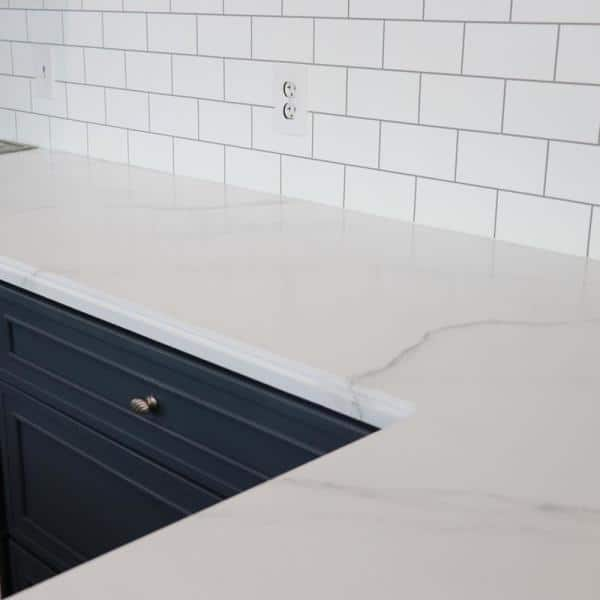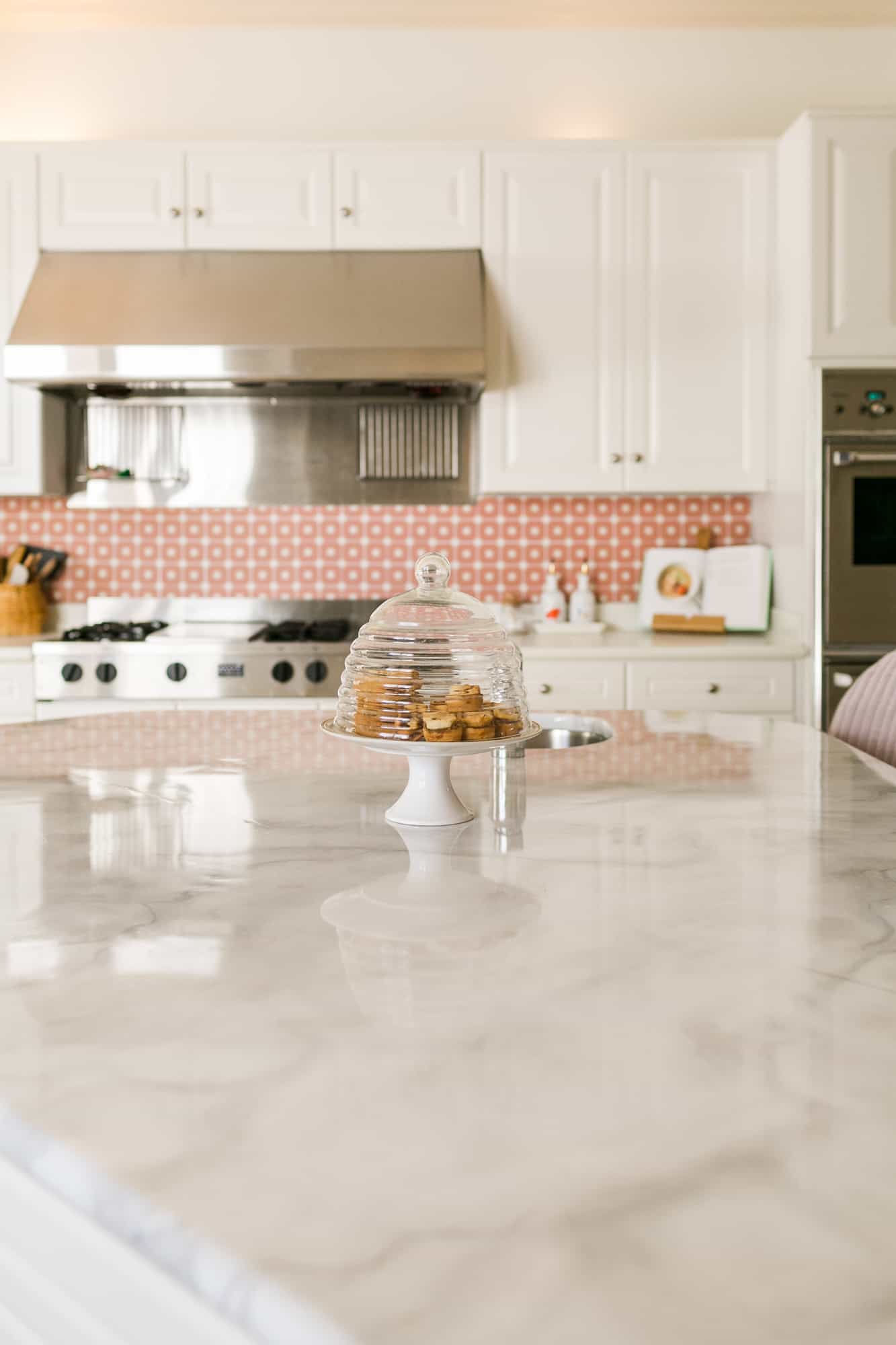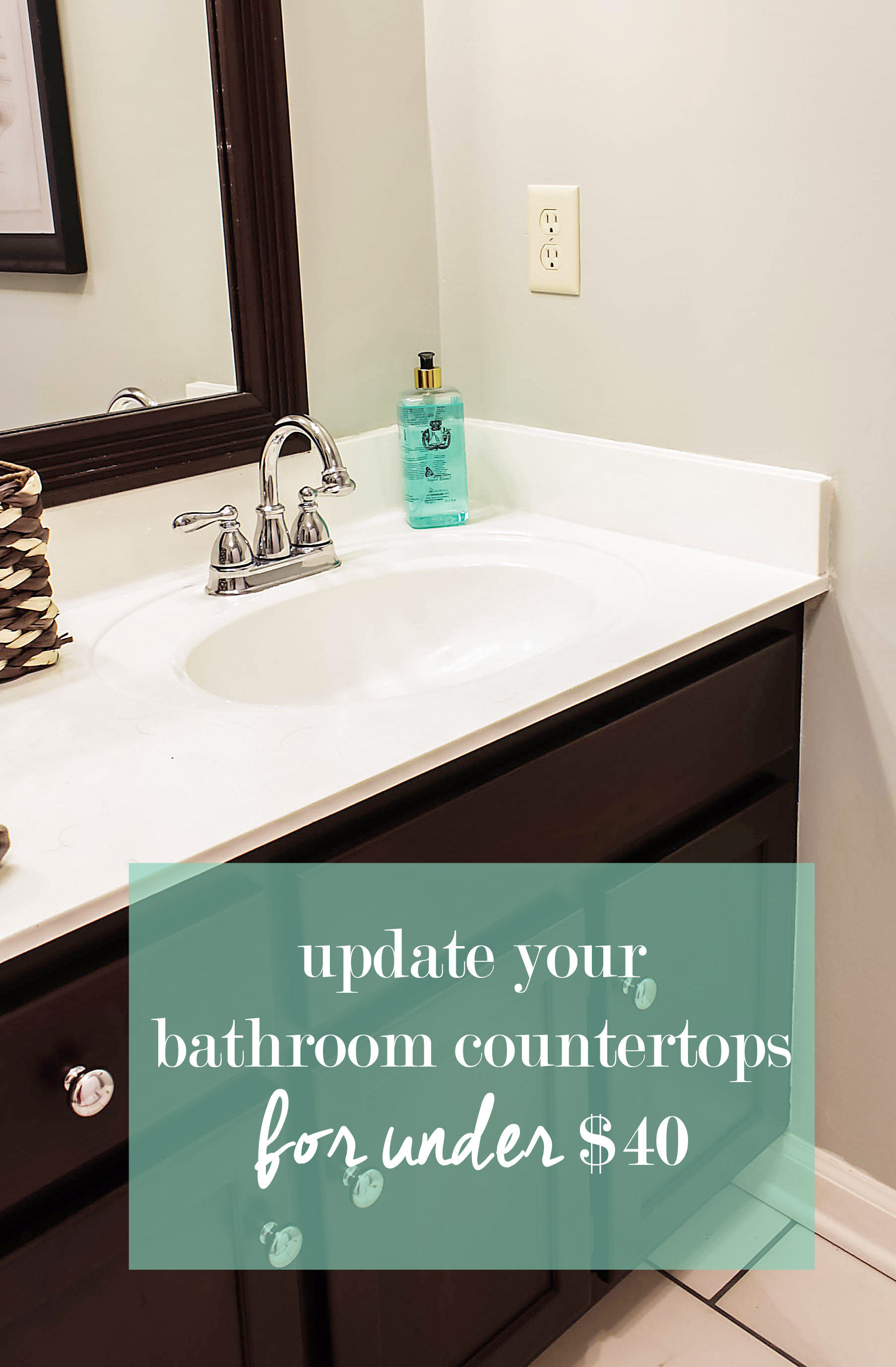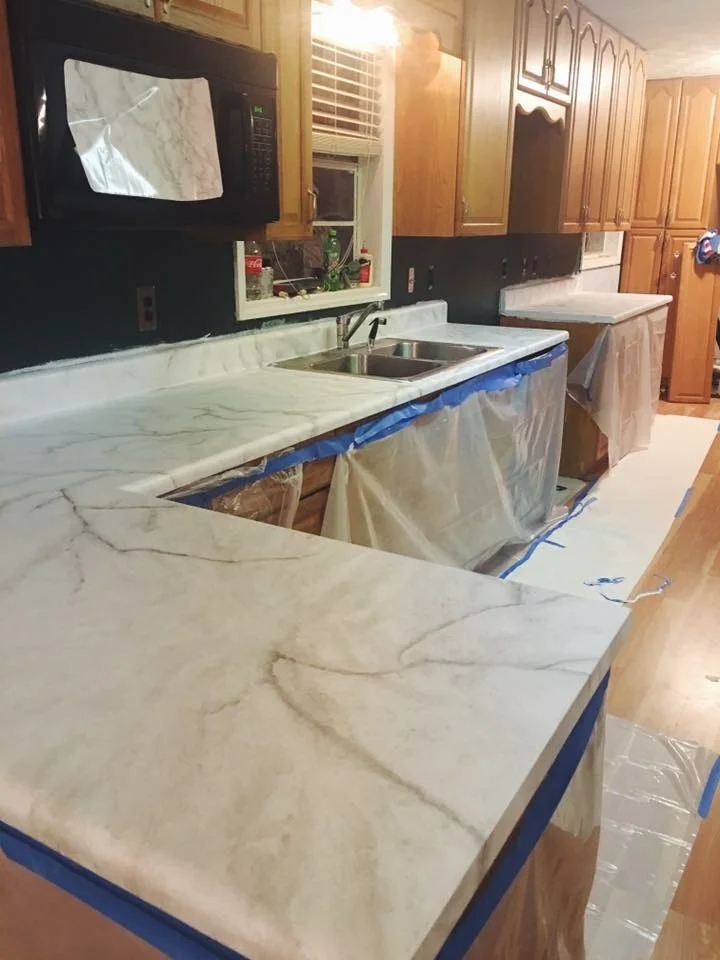Painting over marble countertops can be an appealing option for homeowners who want to refresh the look of their kitchen or bathroom without the expense of replacing the marble entirely. While marble is a beautiful and luxurious material, it can become outdated, stained, or damaged over time. Rather than going through the costly process of replacing it, painting the surface offers a way to achieve a new aesthetic while preserving the natural stone beneath. However, painting over marble requires careful preparation and the use of specific techniques to ensure a long-lasting, professional-looking result. In this article, we’ll explore the key steps, benefits, and considerations involved in painting over marble countertops.
One of the most important factors to consider when painting over marble countertops is surface preparation. Marble is a porous, smooth material, making it difficult for paint to adhere without proper preparation. The first step is to thoroughly clean the marble to remove any grease, dirt, or residues that could interfere with the adhesion process. A mixture of warm water and a mild detergent is usually sufficient for this cleaning. Once cleaned, the surface must be sanded to create texture for the primer and paint to bond.
After cleaning and sanding the marble surface, applying a high-quality primer is essential. Priming the marble helps create a base that ensures the paint adheres properly. The primer must be specially formulated for use on glossy, non-porous surfaces like marble. Applying one or two coats of primer, depending on the condition of the surface, will help improve the longevity and appearance of the paint. Make sure to allow ample drying time between coats.
Selecting the right paint for your marble countertops is crucial for a successful transformation. Not all paints are suitable for use on marble, as some may chip, peel, or fade over time. Most experts recommend using epoxy-based or oil-based paints because they provide a durable, water-resistant finish. These types of paints are highly durable, which is necessary for countertops that are exposed to moisture, heat, and heavy usage.
One major benefit of painting over marble countertops is the ability to customize the look of your space without removing or replacing the existing stone. This allows for more design flexibility, enabling you to choose colors and finishes that align with your vision for the kitchen or bathroom. For example, painting the marble a bright white can create a clean, modern look, while a matte black finish can add drama and sophistication.
Painting over marble countertops can also be an affordable alternative to replacing the countertops. Marble is an expensive material, and removing it, sourcing new materials, and installing new countertops can quickly become costly. Painting allows you to save on these expenses while still achieving a significant visual upgrade. This makes it an appealing option for homeowners on a budget who still want to revamp their space.
While painting marble countertops can be cost-effective, it’s important to recognize that this is not a permanent solution. Paint will eventually wear down or chip, especially in high-use areas such as kitchens where countertops are subjected to frequent cleaning, cooking, and meal preparation. However, with proper care and maintenance, painted marble countertops can still offer several years of use before requiring touch-ups or reapplication.

When choosing a finish for painted marble countertops, it’s important to consider the level of gloss or sheen. A high-gloss finish will create a reflective, polished look that mimics the original marble’s shine, while a matte or satin finish offers a more subdued, contemporary appearance. The choice of finish will largely depend on your aesthetic preferences and the overall design of the room.
A protective topcoat is another essential component of the painting process. Once the paint has dried completely, applying a clear topcoat will help seal the surface and protect it from moisture, heat, and daily wear. Polyurethane or clear epoxy coatings are often used for this purpose, as they provide a durable, water-resistant barrier that preserves the paint and prolongs its life.
While painting over marble countertops can give them a fresh, new look, it’s important to understand that the natural veining and texture of the marble will be lost. Marble’s beauty lies in its unique patterns and colors, and once it is painted, these natural characteristics are covered up. If preserving the original appearance of the marble is important to you, painting may not be the best option.

Another consideration is the potential impact on resale value. Marble countertops are often seen as a luxury feature that adds value to a home. Painting over marble can diminish this value, particularly if potential buyers prefer the natural stone. It’s important to weigh the aesthetic benefits of painting against the potential drawbacks in terms of property value.
Painting over marble countertops can also be a DIY-friendly project for those who enjoy hands-on home improvement tasks. While it requires patience and attention to detail, the process is relatively straightforward with the right tools and materials. Sanding, priming, and painting are all tasks that can be completed by homeowners with basic skills, though professional help may be needed for more complex finishes or large surfaces.
Before embarking on a project to paint marble countertops, it’s wise to test a small, inconspicuous area first. This allows you to see how the paint adheres and how the color will look once applied. Testing also provides an opportunity to refine your technique, ensuring the best possible outcome when you move on to the entire countertop.
Painted marble countertops will require regular maintenance to keep them looking their best. While the paint provides a protective layer, it is still susceptible to chips, scratches, and fading over time. Using gentle, non-abrasive cleaning products and avoiding harsh chemicals will help preserve the finish. Additionally, using cutting boards and trivets can prevent damage from knives or hot pans.
If you’re considering painting your marble countertops, it’s important to have realistic expectations about the durability and longevity of the results. While paint can dramatically improve the appearance of worn or outdated countertops, it won’t offer the same level of resilience as the original stone. With proper care and maintenance, however, painted countertops can remain beautiful and functional for several years.
Finally, painting over marble countertops can give your kitchen or bathroom a whole new look, but it’s not the right choice for everyone. If you’re looking for a temporary, cost-effective solution to update your space, painting can be a great option. However, if you want to preserve the natural beauty and value of the marble, you may want to explore other options, such as refinishing or sealing the existing stone.

Common Mistakes to Avoid
One of the biggest mistakes when painting over marble countertops is failing to properly sand the surface. Marble’s smooth texture makes it difficult for paint to adhere, so skipping or inadequately sanding will result in poor adhesion and peeling paint. Another common mistake is using the wrong type of primer or paint. Not all products are suitable for use on marble, and choosing low-quality materials can lead to a finish that doesn’t last.
Additionally, neglecting to apply a protective topcoat can leave the paint vulnerable to moisture and damage. Rushing the project by not allowing each layer (cleaning, sanding, priming, and painting) to dry fully can also lead to an uneven, blotchy finish.

Can you paint over marble countertops?
Yes, you can paint over marble countertops, but the process requires careful preparation and the right materials. Marble is a porous and smooth surface, so it must be properly cleaned, sanded, and primed before applying paint. Using the correct type of paint, such as epoxy-based or oil-based, is crucial for durability.
How long does paint last on marble countertops?
Painted marble countertops can last several years with proper care, but they are not as durable as unpainted marble. Over time, the paint may chip, scratch, or fade, particularly in high-use areas like kitchens. Applying a protective topcoat and performing regular maintenance can help extend the life of the painted surface.
What kind of paint should I use on marble countertops?
Epoxy-based or oil-based paints are recommended for painting marble countertops because they provide a durable, water-resistant finish. These types of paints adhere well to smooth surfaces like marble and can withstand moisture and heat, making them ideal for use in kitchens and bathrooms.

Do I need to seal painted marble countertops?
Yes, sealing painted marble countertops with a protective topcoat is essential. A clear polyurethane or epoxy coating will help protect the paint from moisture, heat, and wear. This topcoat also adds durability to the finish, ensuring that the painted surface lasts longer and is easier to maintain.
Is it worth painting over marble countertops?
Painting over marble countertops can be worth it if you’re looking for a cost-effective way to refresh your space. It allows you to customize the look of your countertops without the expense of replacing them. However, the decision should be based on your priorities—if preserving the natural stone’s value and appearance is important, painting may not be the best option.
Can I remove the paint from marble countertops if I change my mind?
Yes, it’s possible to remove paint from marble countertops, but the process can be labor-intensive and may damage the surface of the marble. You’ll need to use a paint stripper suitable for natural stone, and the removal process could require professional assistance to avoid damaging the marble underneath.

Related articles:
- Refinishing Cultured Marble Countertops
- White Marble Countertops
- Marble Countertops Backsplash
- DIY Refinishing Cultured Marble Countertops
- Marble Countertops In Bathrooms
- Cultured Marble Countertops
- Gray Kitchen Cabinets Marble Countertops
- Modern Kitchen Marble Countertops
- Refinish Cultured Marble Countertop
- Carrara Marble Countertops Bathroom
